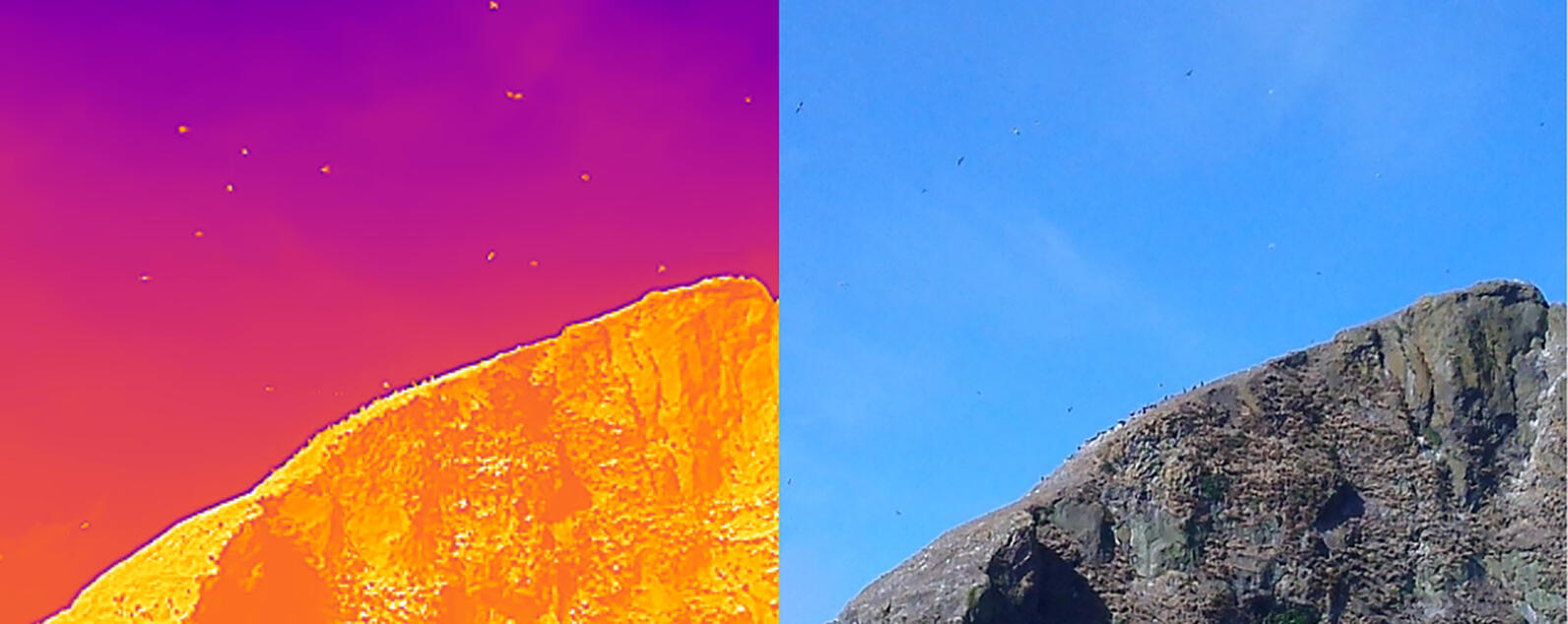
In the Pacific Northwest, Tufted Puffins breed on hard-to-access steep rocks and islands along coast, making it challenging to assess their existing nesting habitat. In the past, images were opportunistically captured via helicopter flights, but appropriate use of drones is slowly becoming an option for seabird research.
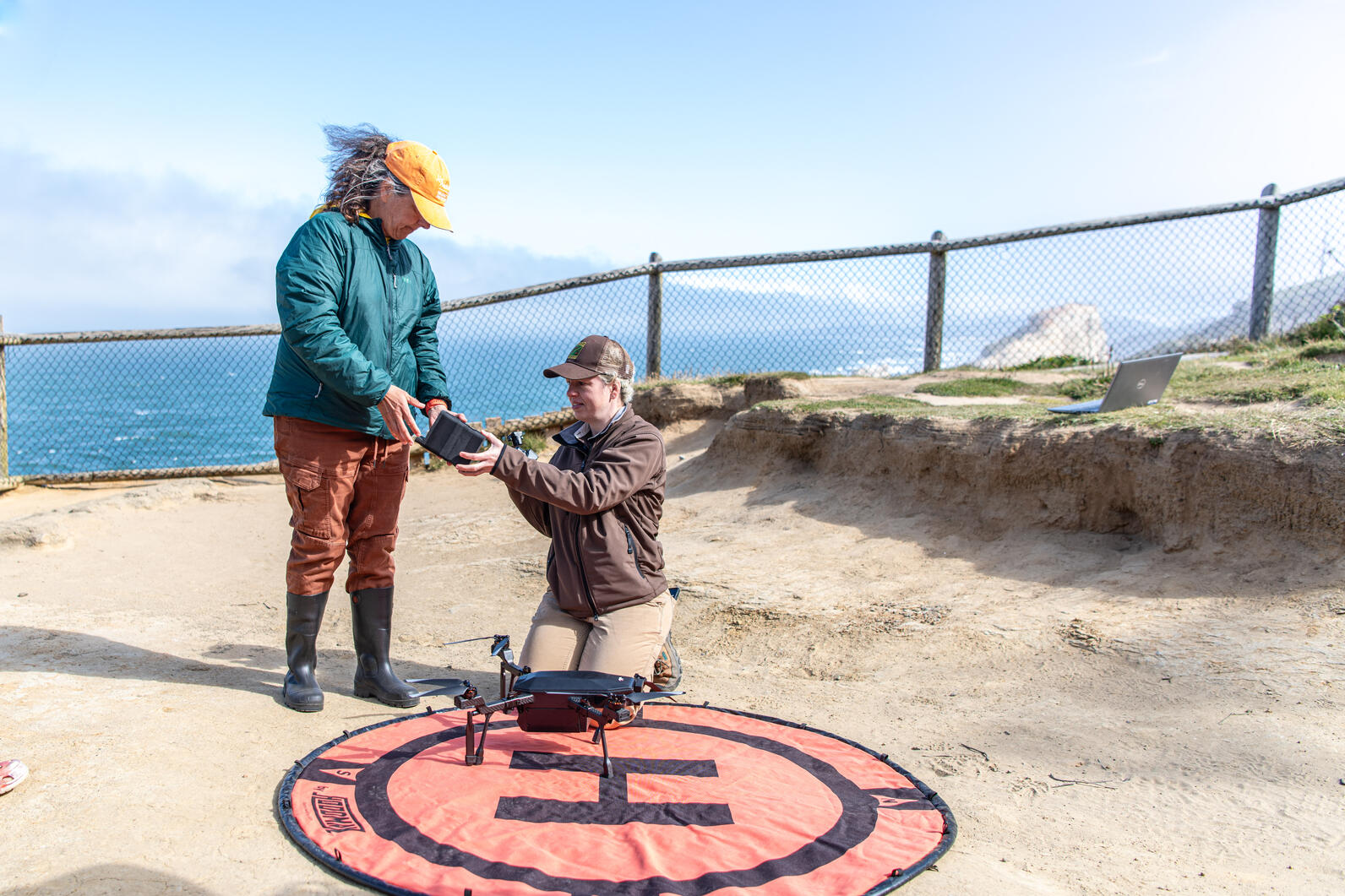
Last month, with support from Friends of Haystack Rock, one drone equipped with thermal imaging technology on loan from Teledyne FLIR and another provided by the Oregon Department of Fish and Wildlife, a permit from the Oregon Parks and Recreation Department, and participation from U.S. Fish and Wildlife Service (USFWS) – along with volunteers – the Seabird Institute conducted drone flights along the Oregon coast to better assess Tufted Puffin habitat. Each flight crew member had a specific role, from the licensed ‘pilot in command’, to the visual observers who tracked the drone and any reactions from wildlife, to the ambassadors who talked to the public and explained that the drones were being flown for research and with appropriate permits. The flights all followed best practices provided by USFWS. Fashioned with a modified pink pool noodle in the event of a water landing, the drone always maintained a vertical elevation of at least 300’ above ground level. If the crew lost sight of the drone in low clouds, and/or if any disturbance to any seabirds was detected – such as a gull aggressively circling near the drone; or an overly vocal black oystercatcher expressing displeasure – the flight was canceled, and the drone was immediately brought back to the beach.
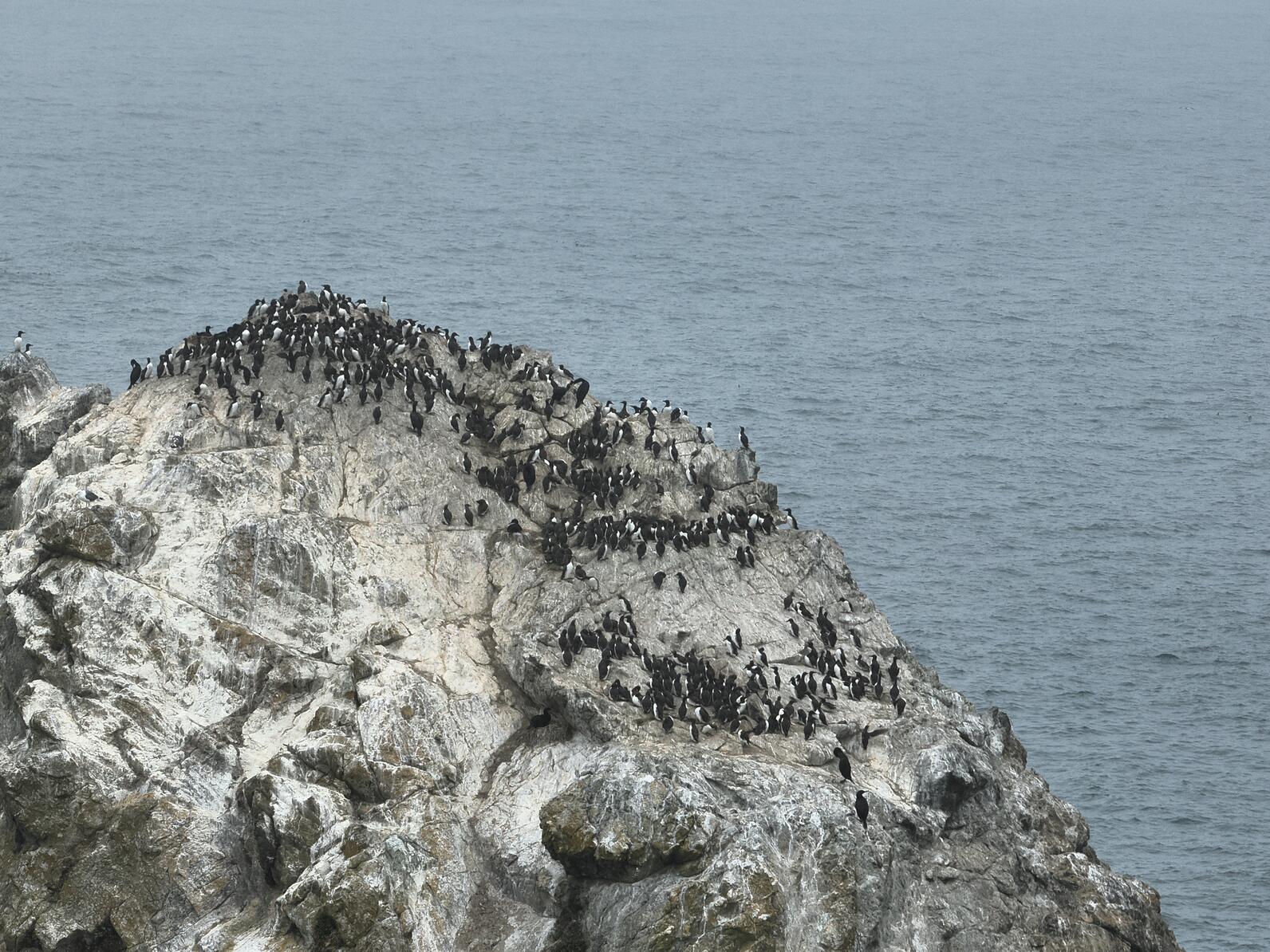
The images will now be analyzed and used to create 3D models of the islands and document the historical changes to Tufted Puffin habitat. This work supports priority strategies identified in the newly finalized Oregon Conservation Action Plan for the Tufted Puffin, a 10-year plan that seeks to halt the decline of Tufted Puffins in their southern range. Information from the flights will also help inform updates to the list of best practices for flying drones near seabird colonies in Oregon and assist with a project to develop machine learning algorithms to count surface-nesting seabirds such as murres and cormorants.
Island Introductions
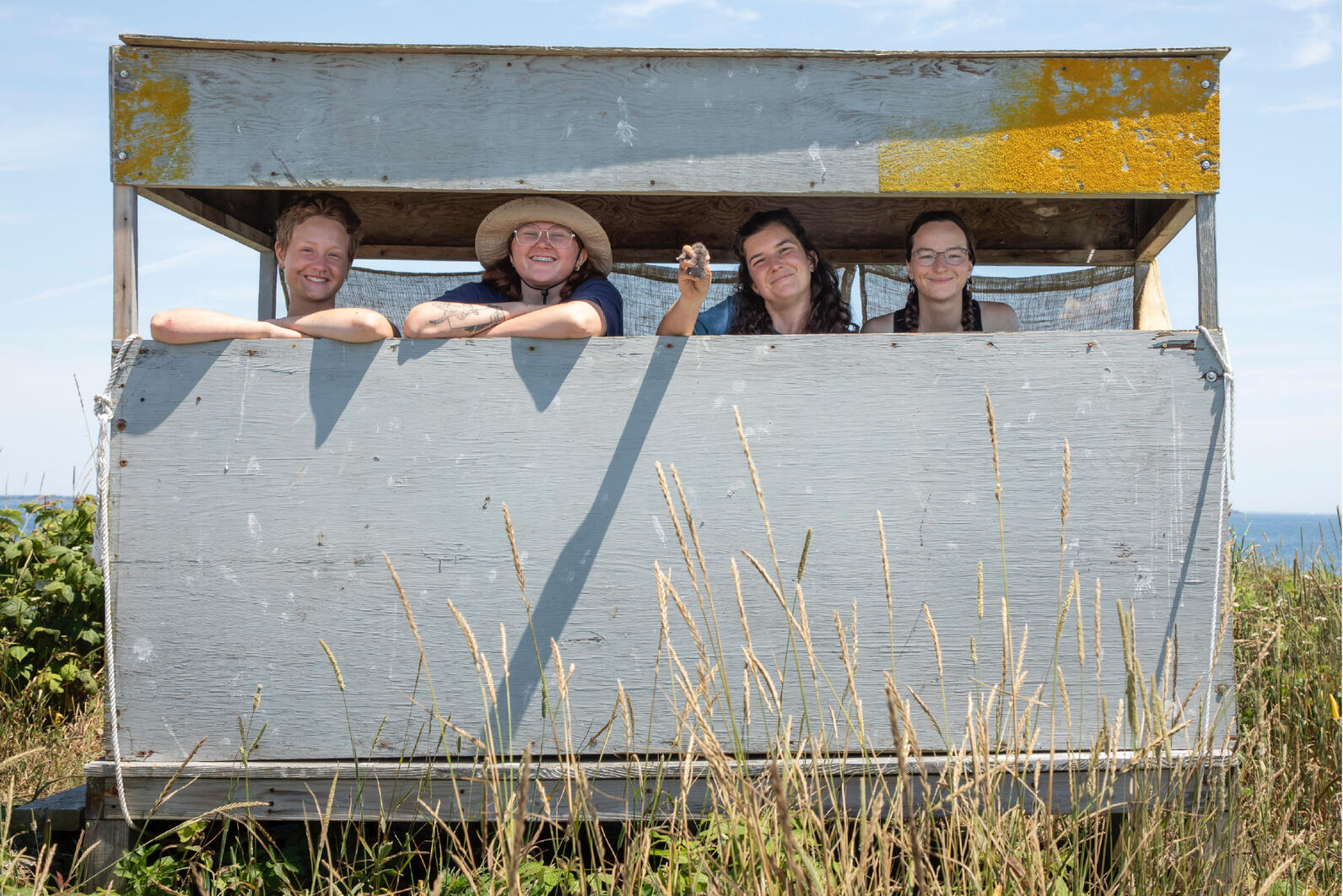
Project Puffin has plenty of good eggs, but Eastern Egg Rock might top the list. The world’s first restored seabird colony, ‘Egg Rock’ is visited often by partners, Hog Island campers, and boat trips featuring Audubon naturalists. This summer, the island was called “home” by four crew members. At just six acres, this crew grows close to their seabirds. “Witnessing [the chicks] interact with each other and their environment is truly magical,” research assistant, Ashley Wilkes, commented.
Egg Rock broke their own island record for most puffin chicks banded in a season this summer, at 27 and counting. With 156 active burrows documented across the island so far, the crew rejoiced in banding a significant sample of the chicks. It’s a good feeling for Ali Ballard, who enjoyed her first season both on Egg Rock and as an Island Supervisor. “Watching the season from eggs laid to chicks fledging is so special. Our crew has put in a lot of effort this season to ensure the best success for our chicks and that alone is so rewarding.”
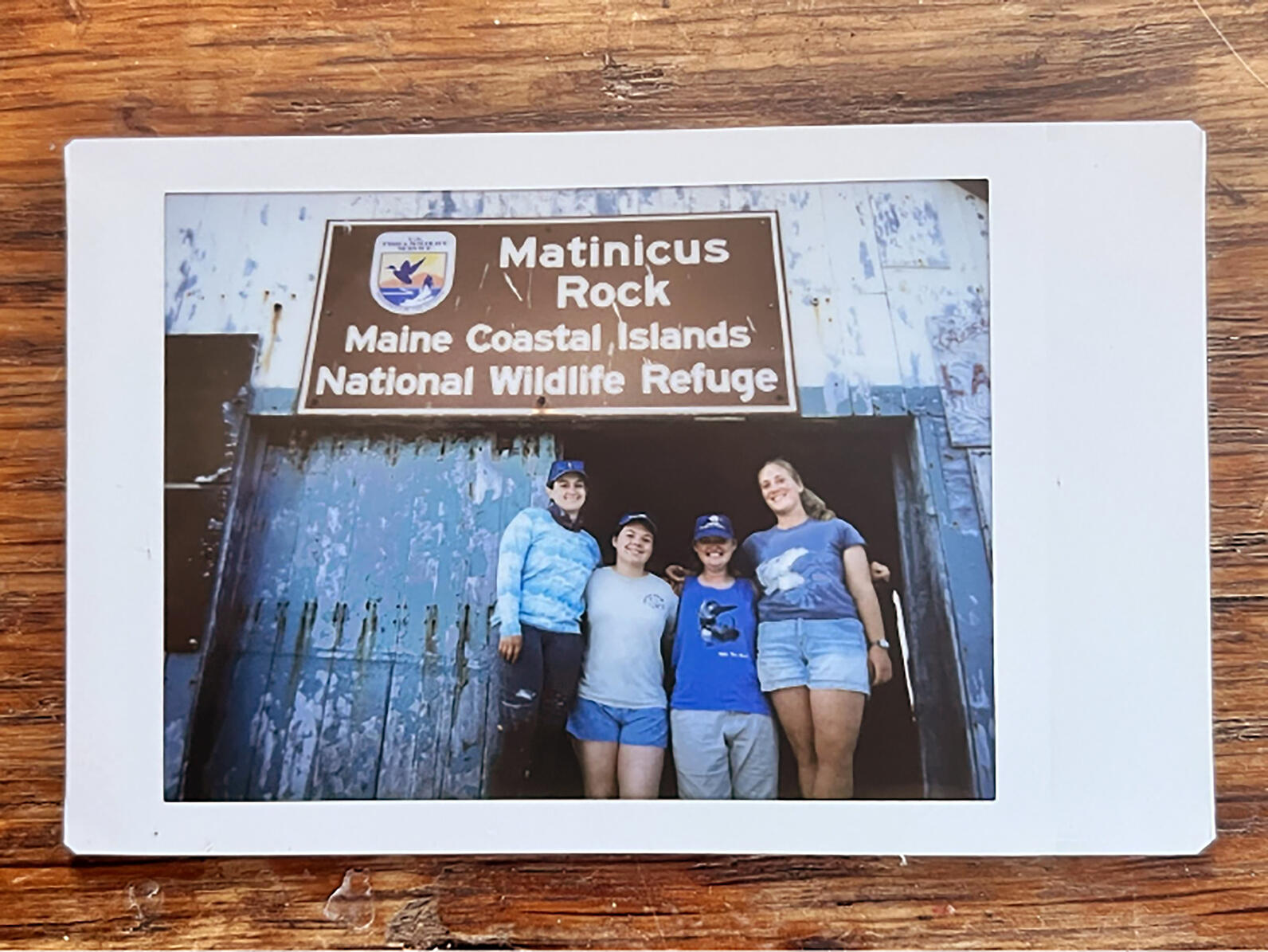
The most remote of the Seabird Institute islands (23 miles out to sea!), Matinicus Rock, or “Mat Rock,” is known for its jagged cliffs and extensive boulder fields. Restoration on the island dates to the 1820s, when the island’s lighthouse keeper was charged with monitoring nesting birds. In 1901, only one pair of Atlantic puffins resided on the island.
Today, a small crew resides on the island from May until September. They have no shortage of feathered friends joining them. “I’ve loved getting to know the different personalities of chicks,” said research assistant, Ashley Mayo. Matinicus Rock is considered a safe haven for record numbers of migratory birds, with the count to prove it.
“These [bird] colonies are crucial to the survival of terns, alcids, and tubenoses, but so are the places where these birds spend the rest of the year,” reflected island supervisor, Tracey Faber.

Seal Island National Wildlife Refuge is 22 miles off the coast of Rockland, ME. Seal Island’s massive cliffs, undulating meadows and rocky beaches draw seabirds and researchers alike. Over 224 species of birds have been seen on the island since 2000.
This season’s joys, according to the research team, included a puffin chick whose burrow was in a bush, and a pair of star-crossed arctic tern lovers. Camilla Dopulos, research assistant, loved watching the flowers bloom across Seal and the guillemots getting chunky. Meanwhile, the puffins and razorbills grew mighty and strong.
“We got to experience the intense bird-joy of weighing fat, velvet-soft, whistling razorbill chicks,” said Coco Faber, island supervisor. “The scale numbers went up and up! Knowing that they fledged with good weights makes me feel so hopeful.”













